A Woman’s Account of a Mountaineering School in Kashmir
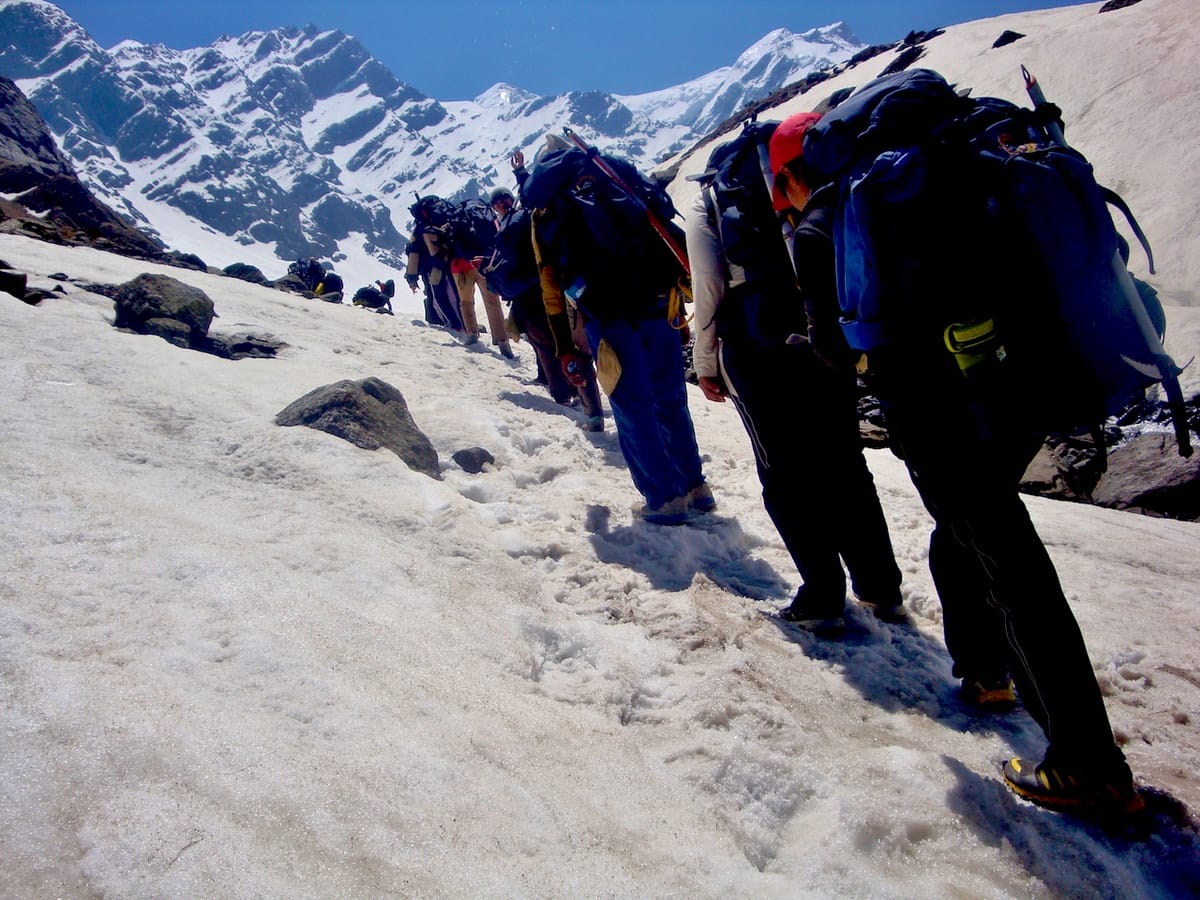
A first-hand account of what it's like to be one of the few women who attend JIM, a mountaineering institute in India’s northernmost frontier, Kashmir
The sharp blow of a whistle in the dead of night shakes me inside out; the moment I’ve been dreading is here, and there’s no turning back. At one am, I am harnessed and buckled, have coerced myself to gulp down a portion of porridge, and am ready to begin the onward march. For over four hours, I relentlessly follow the little circle of light stemming from my head torch. I don’t want to stop, for the temperature is well below a numbing minus twenty degrees, and the wind is sweeping it down to even less. I twitch my toes whenever we stop to keep the blood circulation going, and when I can’t move those, images of amputated frostbitten body parts pop up in my head like re-runs of a horror flick. As thrilled as I am to be on my first expedition, the prospect of frostbite is mildly terrifying. It’s Summit Day, nay, night, and finally, when we reach the base of the first, big, hundred foot high ice wall, dawn breaks over the Stok range in the Ladakh Himalaya to reveal what we’ve left behind. The base camp is a blurry spot hundreds of metres below, and as the blood in my veins starts to thaw, I look around at the spectacle that height and a play of light can create. A veil of dull crimson has appeared in the sky, but the surrounding ice is still blue. I exchange my first smile in six hours with a teammate; the beauty has warmed me. We’re already higher than some smaller peaks, and it’s astonishing to realize the gradient of the ridge we’ve negotiated. The cloak of night took care of vertigo easily. The break is short—enough to drink water, strap on crampons, and get ready to ascend the 6025-metre high Golap Kangri, the ‘Snow Peak with a Flat Head’.
After a basic mountaineering course over a year ago, I decided to go for the next level. Despite the word of caution from friends, I chose the Jawahar Institute of Mountaineering in Kashmir over NIM, where I had done my basic level. Up in the extreme north of India outside Pahalgam in Jammu and Kashmir, the institute is not popular. But it wasn’t clear why. It was this lack of clarity with the opportunity to spend time in Kashmir, my favourite mountain zone of Ladakh, that made me sign up for the course despite all rumours. Kashmir, though a politically sensitive zone at the Indo-Pak border, wears the crown of paradise on earth. As I reached the institute, I realised that the taxi that had just dropped me off was the last bit of comfort I would have for a while. The empty hall that I assumed was a waiting room was actually our dormitory. We had to collect a sleeping bag each and spread it out on the carpet to make our beds. The grey clouds, the sight of a cold, vast hall with no beds, the irksome bonhomie of people who had completed a JIM basic course together, all made my heart sink. The more I explored that afternoon, the more I missed my previous institute and regretted not appreciating it enough while there. Then, along came Rizwana.
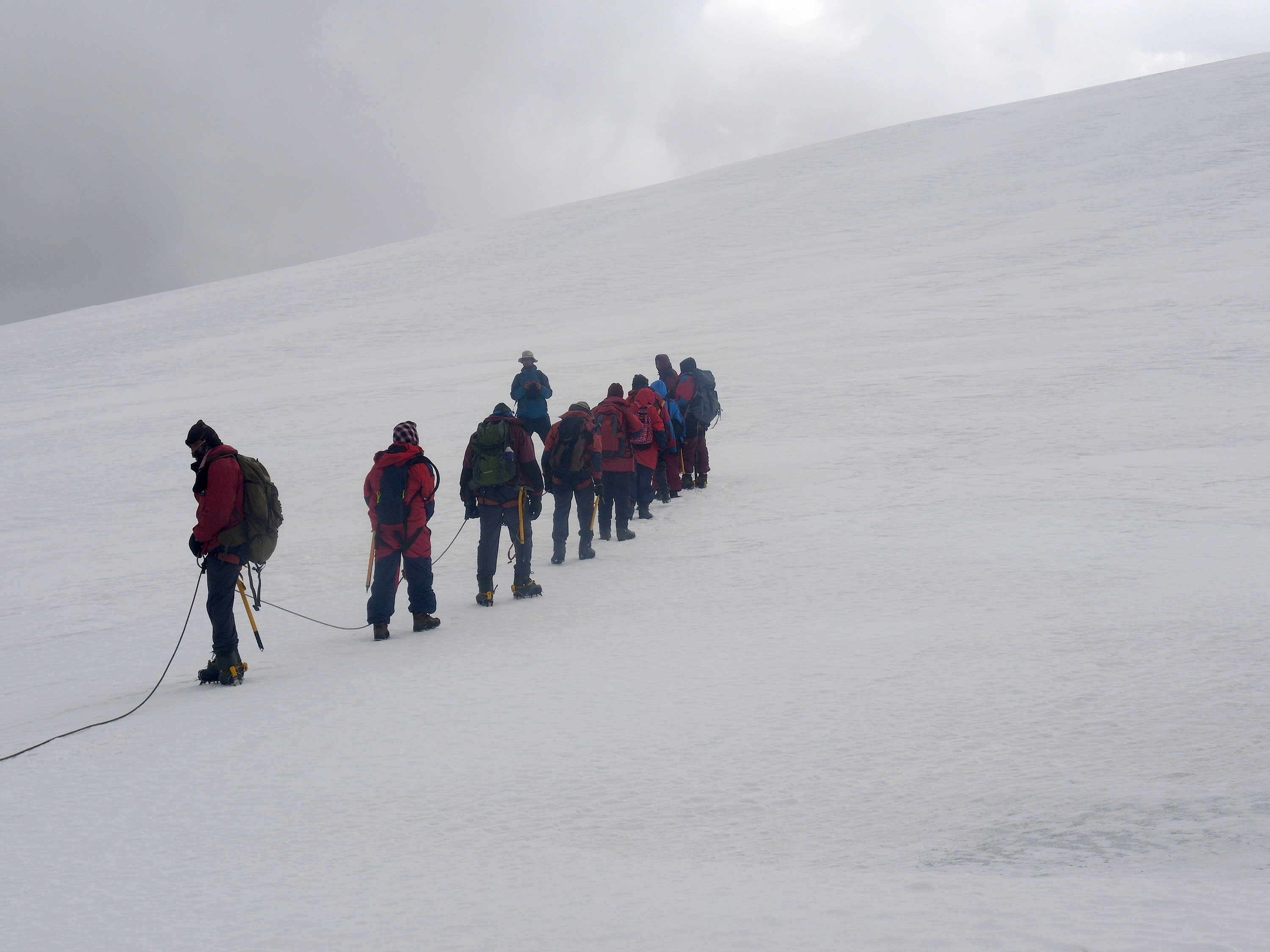
For a 20-year-old, Rizwana Khan exuded the confidence of a mature mountaineer. I felt slightly shaken when the girl who looked like an underage student was introduced to me as an instructor. She was there as a student to get a much-needed certificate. I was inexplicably drawn to her, and she opened up to me on day one.
Rizwana is from an underprivileged Muslim family in Uttar Pradesh’s Ghaziabad district. She first came to J & K in 2009 with a dream to climb Everest—not that she knew how to spell the name, let alone how to climb the mountain. But her father took a small loan to pay for the basic course at JIM. She proved her mettle, and managed to get a job at the institute that cannot afford to look too deeply into merit as there are no takers among women for jobs there.
I dug deeper into this, and a lot was revealed in my exchanges with Colonel Virinder Singh, the institute’s principal. A passionate mountaineer from Jammu, he carved a career over the years as a senior instructor at the Indian Army’s much respected High Altitude Warfare School or HAWS, then as the Officer In Charge (OIC) of training at the Siachen Battle School, then the Kargil Battle School, and subsequently the Desert Warfare School in Barmer before JIM. The man is friendly and witty, and very accessible as a principal. He admits that the infrastructure has a long way to go. I’m concerned about the poor boy to girl ratio (we were thirteen in a class of nearly a hundred students), and he explains why JIM is flawed. The Jawahar Institute of Mountaineering is currently one of six national mountaineering institutes in India, and perhaps the only one to have faced so many challenges, because of its location in India’s most politically volatile region.
Established in October 1983 in Aru, the institute changed location thrice due to militancy threats before finally settling on Nunwan near Pahalgam, a three-hour drive from the capital Srinagar. When Colonel Singh took over in 2009, the total number of girls attending courses annually, whether mountaineering or skiing, were a mere 642. They rose dramatically to 6,653 in 2014-15. The Colonel, who was an avid mountaineer had made the institute a personal challenge, and wanted to change the image of the institute and that of Jammu and Kashmir as an unsafe place. Its bad reputation has kept not just students but potential instructors away, in a place where most women are not allowed to pursue anything beyond a teaching career at a primary school.
The Colonel says students act as the biggest ambassadors in spreading goodwill today. Despite the comparatively poor infrastructure and mediocre equipment, the success story of JIM lies in the struggle it has overcome. Other institutes have had it easy; nowhere else have they had to deal with curfews, riots, local disapproval, and being shuttled like an unwanted responsibility between the central and state governments.
Compromise, however, says the principal, might be on other factors at JIM, but not on training. I couldn’t agree more, especially because we have been placed under the able guidance (and iron rod) of Mangal Singh Koranga, 36, an ex-instructor from HAWS. He has participated in about ten major Indian Army expeditions including those to Kamet, Panchachuli I, Rajrambha and Shivling peaks and numerous smaller expeditions.
Mangal ustaad, as he is referred to by lieutenants, wing commanders and other senior army officers who are also part of this course, is a disciplinarian to the hilt. The worst thing to happen to you during the course is not the traumatic physical training regime every morning or being given additional tents to carry to base camp, but being in his bad books. Individual punishment can range from doing twenty push-ups right after you’ve climbed a rock face, while group punishment could mean hunting for a lost rock piton on a vast, craggy stretch for hours in the scorching sun, no matter how tired you are. Only then, he adds, “will you realise the value of a small piton that can a save a life. Only then will you realise that you cannot afford to be a careless mountaineer”.
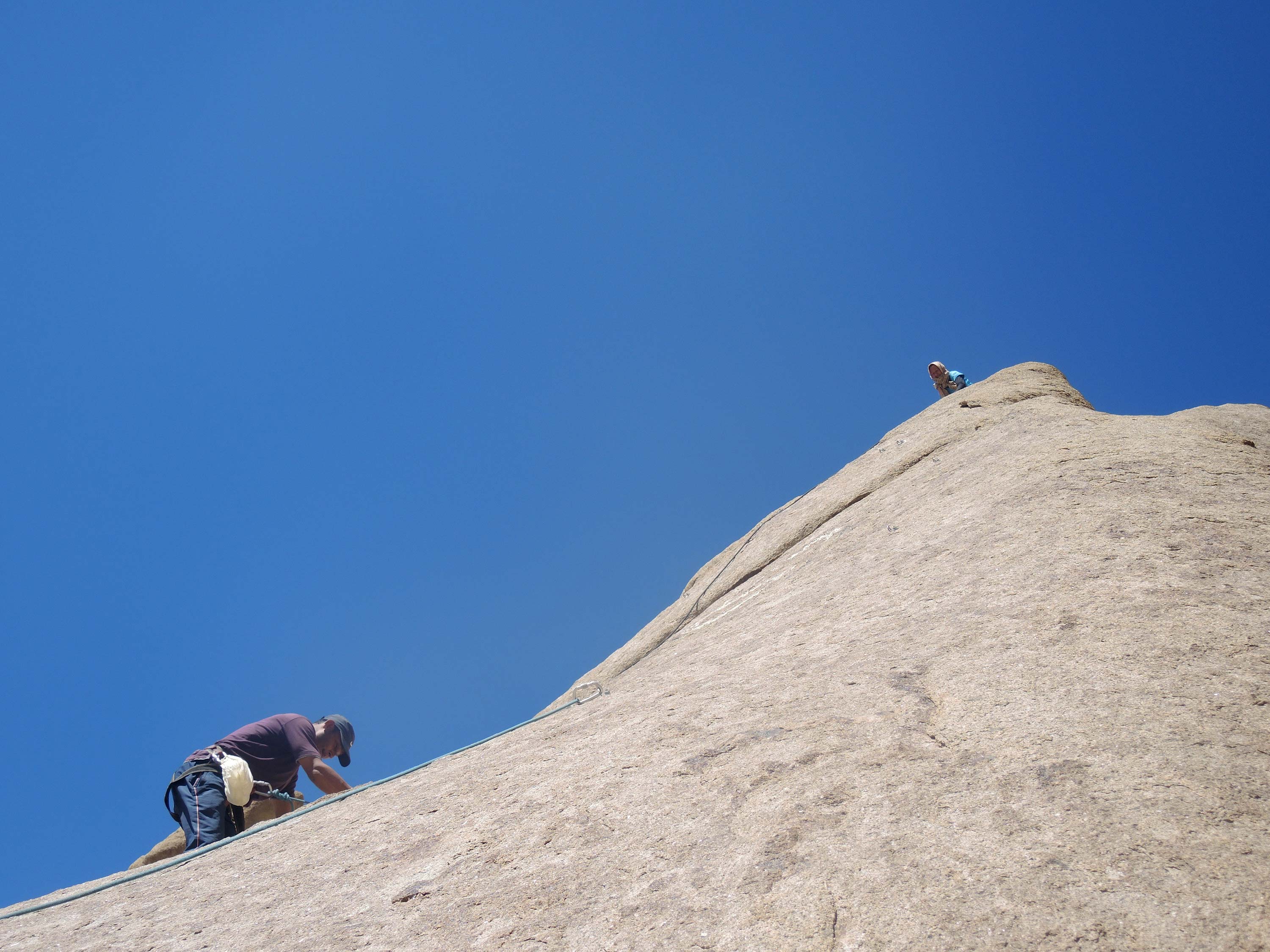
Tsering La Dol, 28, a Ladakhi mountaineer, also joined the course. She climbed Everest when she was 18, chosen for the NCC expedition from over 500 candidates across the country. Some of the best private adventure outfits in Ladakh don’t hire women, and that is how a highly qualified Ladakhi woman like La Dol found herself working at a Kashmir-based government institute. The other senior instructor is Gurmeet Singh, who has a fierce Haryanvi accent that I sometimes don’t follow.
When it comes to training, girls are treated almost equally, and everything I had heard about a mixed class being easy on girls was untrue; you won’t be let off the hook simply for being a girl. Boys may extend their courtesy by letting you skip ahead in the queue for tea, but not when it comes to carrying backpacks or equipment.
JIM has a unique marking system. Instead of one hundred, we are judged on a total tally of three hundred points, with individual tests for every mountaineering skill, including rock climbing, rappelling, and base making. An endurance race at 11,500ft that requires one to run an uneven stretch of nearly 5km with 8 kilos of weight for girls and 12 kilos for boys, carries fifty points. Another 50 points are awarded straight away if you make it to the summit on the final expedition, and 50 points are kept aside for a theoretical exam upon return. The Instructional Practice test requires each student to give a talk based on a chosen mountaineering topic, after which the audience is allowed to ask questions. The thorough detailing of this system ensures that every aspect of learning is covered. While my previous institute judged students on their overall performance, the system here warrants that I learn to climb the toughest of rock faces in the training area even if it takes multiple attempts, for there is no escaping it and no underperforming in one area and making up in the other.
The level of testing goes up here even more due to the frightful lack of good equipment. I’m flummoxed on the first day when I realise that there are certain items that aren’t available at all. Climbing on mirror-smooth rock faces without climbing shoes is a talent non-existent in me. There will also be no down jackets or feather sleeping bags for the expedition. The snow-shoes and crampons are limited, so everything will boil down to either a Who Dares Wins race, or the generosity of some who will be magnanimous enough to let others have them. Before reaching Leh, I start making alternate arrangements for equipment from local Ladakhi friends.
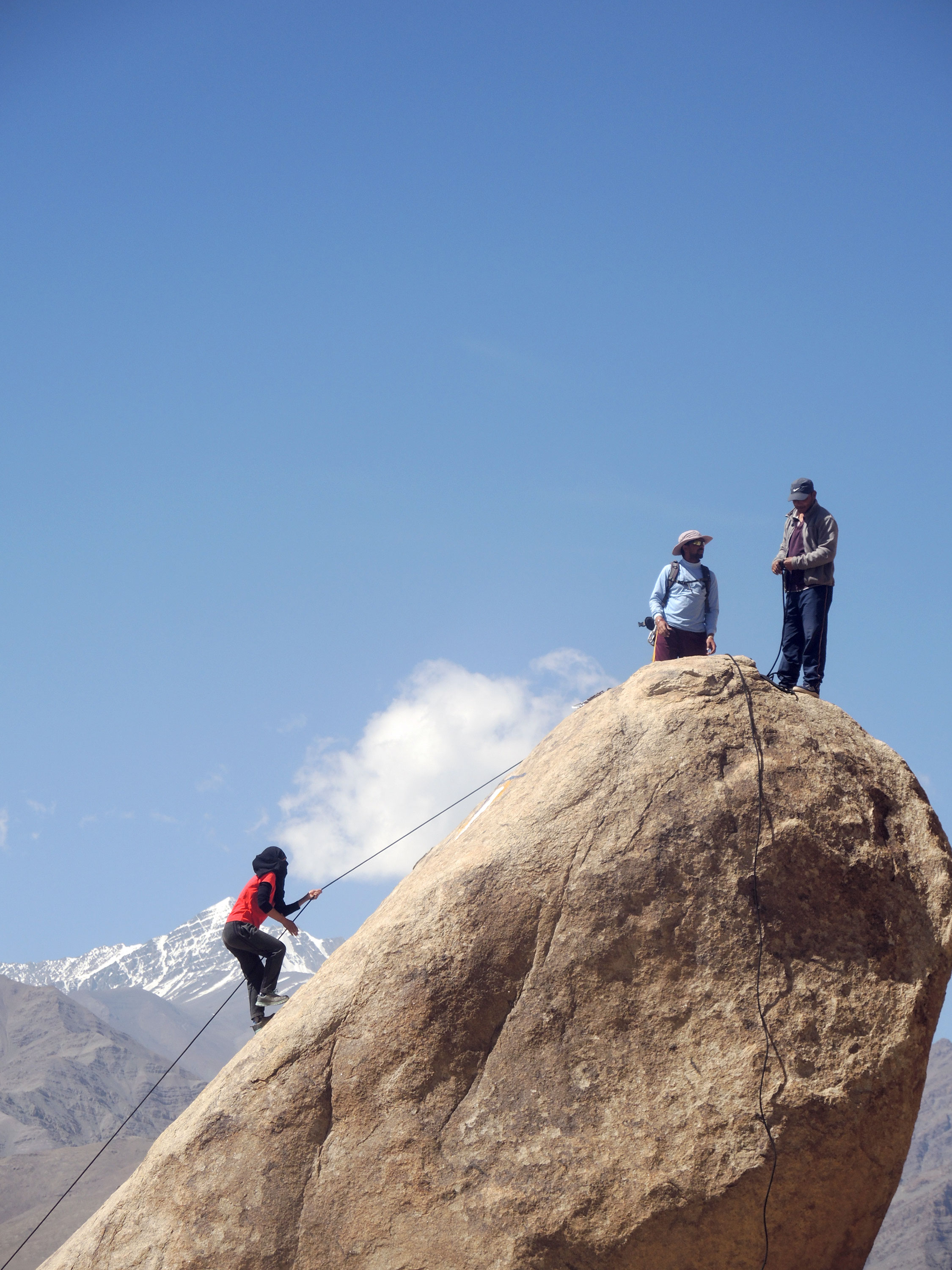
I realise how important it is to have good equipment on the expedition, and how much the lack of it can adversely affect your performance and morale. I’ve managed to scrape through the rock climbing training and tests because I threw a fit about not being given climbing shoes. Perhaps a mug of hot chocolate might be too much to ask for in a government institute, but PA shoes is a fair expectation on a mountaineering course. Beseeching Mangal ‘ustaad’ as a fellow Kumaoni, we finally got a bag full of various sizes that we took turns to put on and climb. But at the base camp, I can see girls and boys reeling under the effect of high altitude and low temperatures, some of which could have been kept at bay with the right equipment. I’m thankful for all that I’ve managed to procure, for I’m warm both inside and outside my tent. I’ve had no Acute Mountain Sickness to battle, and my body and mind function well throughout. Some don’t have the right gloves, or jackets, and some are cold through the night and cannot rest well. I’m surprised to see that Rizwana is down and out, she’s the one I had put my money on.
Rizwana prides herself in being one of the more hardy female instructors, and she is. While most of the female Kashmiri ‘instructors’ are more like wardens, Rizwana has been active on the field come rain or shine, even in the holy month of Ramadan. I am astonished to hear her accounts of training with classes while she was fasting, and even refusing water. Balancing mountaineering and religion is a double-edged sword, and Rizwana has faced some backlash for refusing privileges for fasting instructors of the institute in the Islam dominated state. What would you do if you got thirsty on a trek like this, I had asked her when we were on a 25km introductory hike through gorgeous alpine landscapes to the lovely Kashmiri hamlet of Aru. ‘I would dunk my head under cold water, because it is the brain that needs to stay cool’, she had said with a smile. I couldn’t agree more. And yet, I am distraught when I see Rizwana weak and cold at the base camp, clinging to her thin jacket and woollen gloves that no mountaineer in his or her right mind would wear on an expedition. She’s not the best, but given the right support, she could be groomed into a promising athlete.
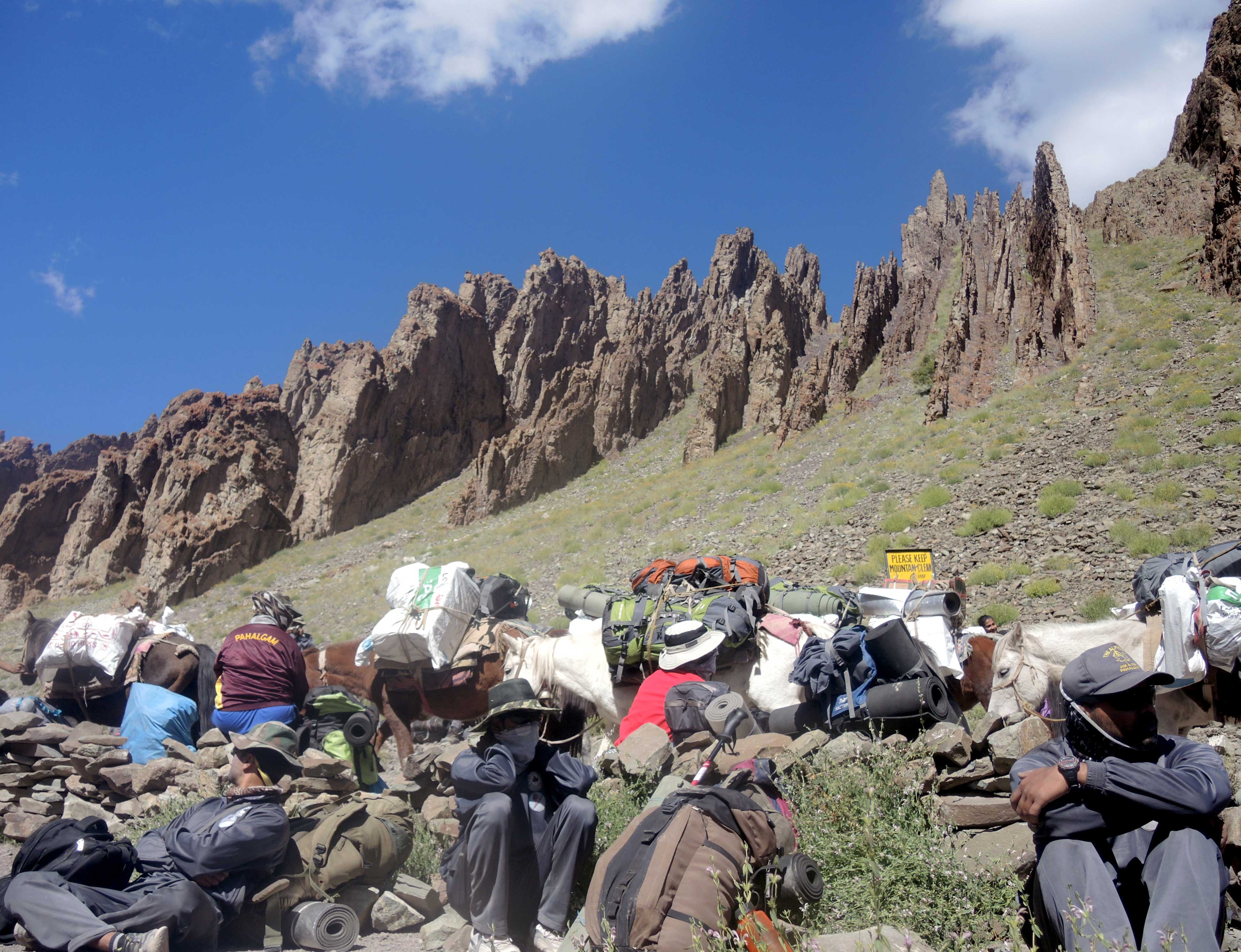
We’ve been split into two groups, one half of which is headed to the popular Stok Kangri, the highest mountain in the region. I choose Golap Kangri, that is shorter but a more technical climb, so I can’t be accused of choosing a ‘trekking peak’ that many mountaineers dismiss Stok as.
I learn later from the other group that it’s actually not a mere trekking peak; they had to fix a rope and tackle a glacier covered in scree. Our group ends up dealing with a lot more, evident in the fact that our relatively smaller summit and return takes us nearly seventeen hours. At around 5.30 am when we reach the base of the first gigantic ice wall, I regret what I grade as the Stupidest Decision of my life. I gave away my cleverly acquired crampons just as we left base camp to someone else because I wanted to reduce the weight of my summit bag, and because I thought I could manage without them. I’m stuck with no crampons, a girl ahead who is reeling with AMS, and another right before me who manages to pull the piton and fixed rope out of the wall leaving everyone dangling on to their active rope for dear life. It is only with the help of Sunil, a rope member ahead whose footholds I step into, and the sheer power of my arms and ice axe that I manage to climb that ice wall. It’s a lesson well learnt, that goes into my mountaineering rulebook along with other pointers such as never lending your sling to anyone and never leaving your bottle full of water unattended. Switching my bottle for my camelback hasn’t helped either. My water has frozen, and I’m left with no choice but to borrow a sip here and there with the promise of returning the precious liquid as soon as mine thaws.
When we are finally past the second tricky vertical stretch and stand on a snowy ridge, the view erases the agony of pulled-muscles, backaches, blisters, nose bleeds and headaches. We are surrounded by a sea of clouds, and the tips of little peaks break through the waves like islands. The Karakoram Range can just about be seen in the far horizon, and I’m exploding with an incredible love for nature. “You’re near a cornice!” yells Mangal Ustaad, threatening to throw my crony Bhatt and myself off the peak along with our cameras. We hurriedly get back into the line and rope up. ‘Hurriedly’ takes on a totally different meaning at 19,000 feet—a turtle could race past us. Every ounce of weight matters, drawing every breath is an activity you are awfully conscious of, and everything feels like being in a sequence from Requiem For a Dream. Finally around half past one in the afternoon, we summit Golap Kangri. We’re way past our target time, and the weather is already turning bad. We quickly take the routine summit photos, and I’m relieved to begin the descent. I let my exhausted body take over my mind momentarily; something I’m not very proud of in retrospect and eager to change in my next expedition.
I’ve been feeling queasy on our way down, but my brain can’t quite place it. Something is terribly wrong, and then it hits me—I haven’t peed in over twelve hours. There’s not enough time to look for a rock but enough to shout out a warning to others to look away. And as I zip up, all human needs come tumbling down, like seracs in an icefall. I want to sit, eat, rest, sleep. I want to drink an entire flowing glacier from its snout, but make do with my (now melted) camelback water, a few dry fruits, a spoonful of flavoured rice from my unopened lunch pack to quash my sudden craving for salt. Slipping, tumbling, slithering my way back to base camp, coming back to my senses feels like a homecoming of sorts. And in that surreal state, I look over my shoulder one more time to take in the vast expanses of dazzling white snow, crimson and purple rocks, cirrus clouds and grey-blue skies, and above all, I hope that Kashmir be paradise once more, for I have felt the pulse of its people and its mountains, and it beats for peace.
Feature Image © Shikha Tripathi
This story featured in The Outdoor Journal Spring 2016 edition of the print magazine



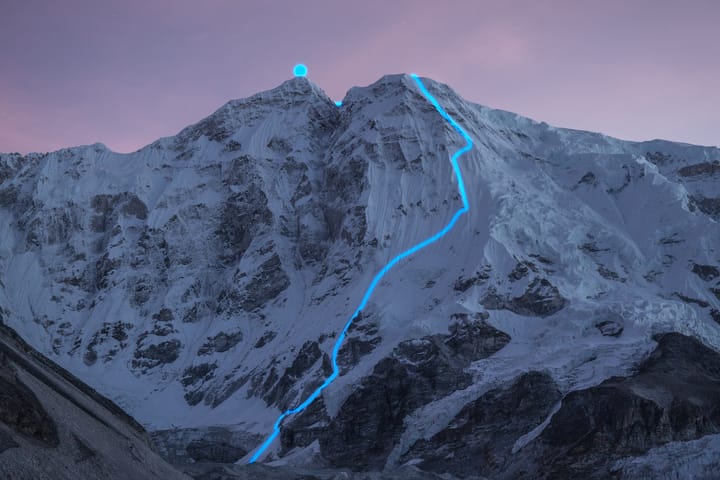
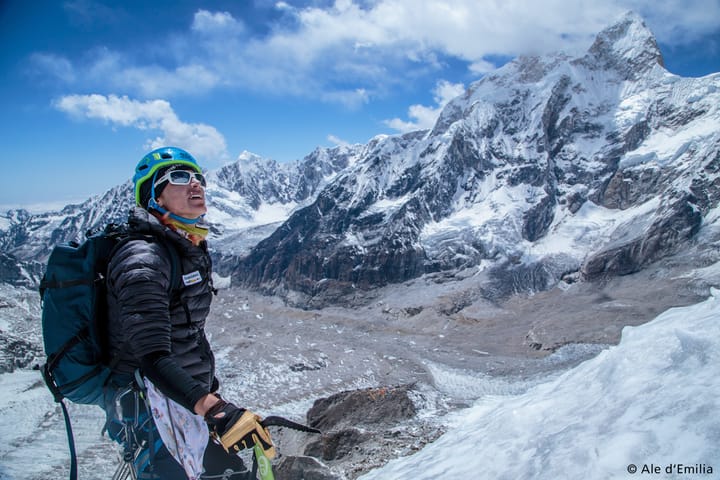
Comments ()